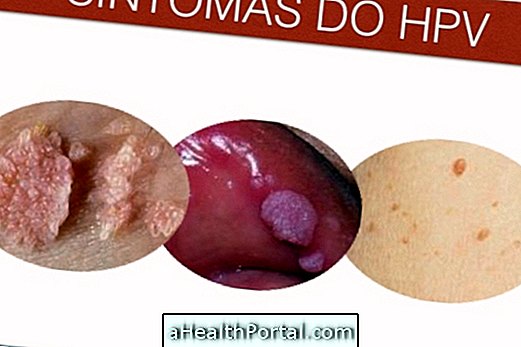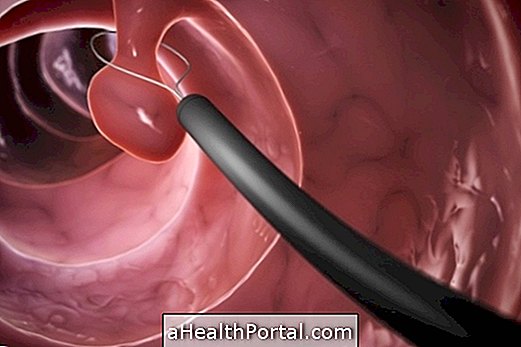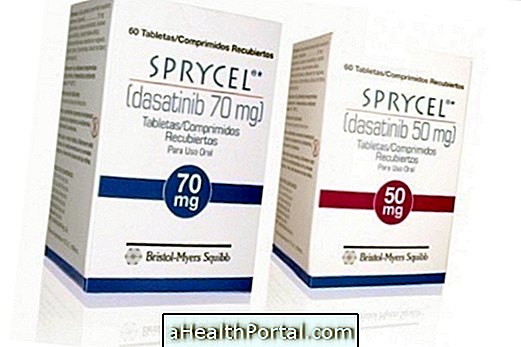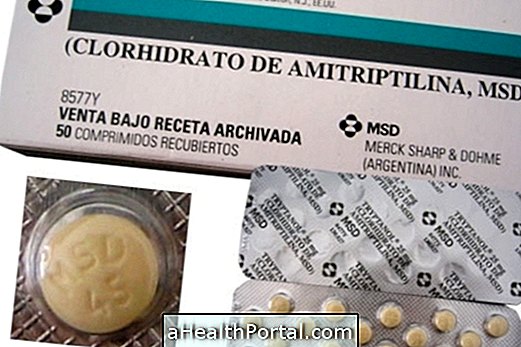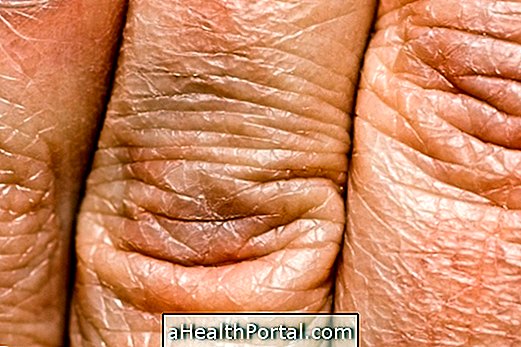Fasciola is a parasite caused by the hepatic Fasciola worm , and more rarely Fasciola gigantica, that are capable of infecting herbivorous animals and people who ingest water or aquatic plants, such as watercress, that are contaminated with cysts, also called metacercáreas.
These worms are part of the class of trematodes, flattened and that can spread through various organs of the body. When they are ingested, the metacercariae release larvae in the intestine, which migrate through the abdominal cavity until reaching the liver and bile ducts, where they develop, causing inflammation and even cirrhosis of the liver.
To treat fascioliasis, the use of vermifuge medications, such as Praziquantel, Triclabendazole or Nitazoxanide prescribed by a doctor is recommended. It is also important to carry out the prevention through water and raw food that will be consumed, as well as treatment of cattle or other animals that may be infected, as they can eliminate eggs through the feces.

How does the transmission and the cycle
Hepatic fasciola is transmitted to man from the consumption of water or raw vegetables containing cysts of this parasite. Another possible but more rare form is through the consumption of raw liver meat that has larvae.
These worms contain a life cycle that involves the infection of intermediate and definitive hosts, and happens according to the following steps:
- The eggs of the worms are released by the feces of the host, which can be people or animals such as cattle, goats and pigs;
- In an aquatic environment, the eggs release the worm in a pre-larval stage called miracidia, which will search for the intermediate host, which is the freshwater snail of the genus Lymnaea ;
- When lodged in the tissues of the snail, the miracides transform themselves into species of cysts that contain larvae inside;
- Cysts filled with larvae leave the intermediate host and settle on the surface of aquatic plants, the watercress being the main example;
- The definitive host, which may be a person or an animal, acquires infection by the consumption of water or contaminated plants;
- In the digestive tract, the larvae are released from the cysts, perforate the intestinal tissue, and migrate to the liver through the abdominal cavity for about 1 to 2 weeks;
- In the liver, the larvae continue to grow for about 2 months, and then lodge in the bile ducts, where they become adults, 3 cm in length, multiply and cause chronic inflammation of the region's organs .
Then the cycle restarts by releasing eggs that are carried by the bile into the intestine of the infected animal or person, and are capable of causing new infections.


Main symptoms
The symptoms that fascioliasis can cause may be different in each case, varying according to the stage and the intensity of the infection. Thus, in the acute illness that occurs during the migration of the parasites, in the first 1 to 2 weeks after infection, symptoms such as fever, abdominal pain and swelling of the liver can be triggered.
Already when the parasites are lodged in the bile ducts, the infection becomes chronic, an inflammation of the liver may occur, and cause signs and symptoms such as weight loss, recurrent fever, liver enlargement, fluid accumulation in the abdomen, anemia, dizziness and shortness of breath.
Inflammation in the liver, in some chaos, can lead to complications such as obstruction of the bile ducts or cirrhosis of the liver. Liver cancer is not a direct complication of hepatic fasciola infection, however, liver carcinoma is known to be more common in people with cirrhosis of the liver. Learn more about what causes liver cancer and how to suspect it.
How to confirm
The diagnosis of fasciolysis is suspected by the physician according to clinical assessment and observation of the habits of the affected person, such as raising animals or eating raw vegetables. Tests that may confirm infection include identification of faecal eggs and immunological blood tests.
In addition, ultrasound or tomography of the abdomen can help to demonstrate the parasites inside the bile tree, in addition to identifying areas of inflammation and fibrosis. Learn more about liver exams.
How is the treatment done?
The treatment of fascioliasis is physician-directed, and includes the use of antiparasitic drugs such as Praziquantel in 3 doses, Triclabendazole in a single dose or Nitazoxanide for 7 days, for example.
If there are already complications in the liver, such as cirrhosis or obstruction of the ducts, it will be necessary to follow up with the hepatologist, which will indicate ways to prolong the health of the liver and, if necessary, indicate some type of surgery to correct the obstructions.
How to prevent
To prevent Fasciola hepatic infection, it is recommended to thoroughly decontaminate raw vegetables before eating, and always use clean and proper water for consumption. In addition, it is advised to avoid the consumption of raw meats. Learn some techniques to properly wash vegetables.
In addition, it is important that caregivers of cattle and other animals take care of feeding and carry out treatment if they are infected as a way to prevent the persistence of worms in the environment.





